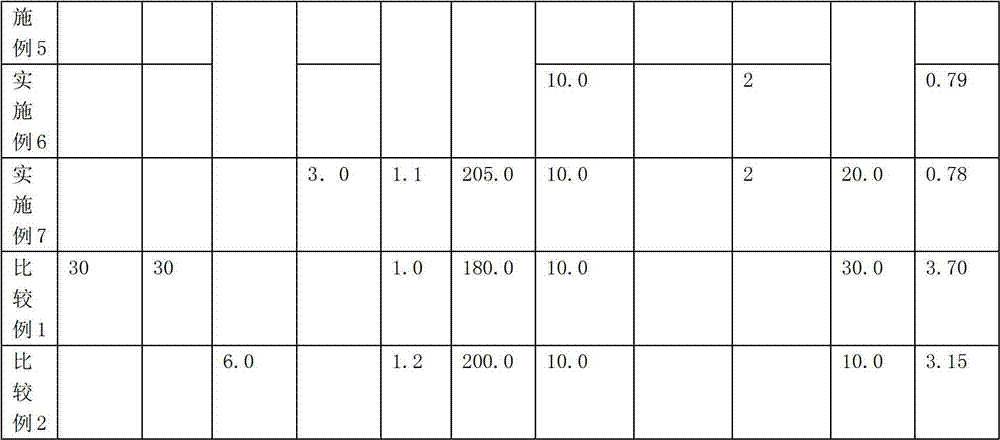Preparation method of ultrafine composite fiber with high wet transmitting performance
A technology of ultra-fine composite fiber and high moisture conductivity, which is applied in fiber processing, fiber chemical characteristics, rayon manufacturing, etc. It can solve the problems of fiber no practical value, mechanical property decline, spinnability decline, etc., and achieve improved spinning Processability, improved compatibility, excellent softness
- Summary
- Abstract
- Description
- Claims
- Application Information
AI Technical Summary
Problems solved by technology
Method used
Image
Examples
Embodiment 1
[0019] A method for preparing an ultrafine composite fiber with high moisture permeability in this embodiment includes the following steps: 1) Firstly, through a method of combining melt polycondensation and solid-state polycondensation, using terephthalic acid and ethylene glycol as raw materials, The molar ratio of terephthalic acid to ethylene glycol is 1:1.2; add 30% of the molar percentage of terephthalic acid and 1,4- Butanediol, to synthesize a copolyester with a melting point of 180°C and an intrinsic viscosity of 0.5dl / g; then the copolyester is subjected to solid-state polycondensation for 36 hours at 170°C and a vacuum of less than 1kpa to further increase the intrinsic viscosity Increased to 1.0dl / g, copolyester additive with a melting point of 180°C; 2) The intrinsic viscosity of 5% of the total weight percentage of the additive, compatibilizer and polypropylene resin prepared in step 1) is 1.0dl / g copolyester additive and account for the compatibilizer EPDM-g-MA...
Embodiment 2
[0022] The preparation steps of the present embodiment are basically the same as in Example 1, except that the copolyester with an intrinsic viscosity of 1.0dl / g accounting for 10% of the total weight percentage of the additive, compatibilizer and polypropylene resin accounts for the additive, compatibilizer and polypropylene resin. EPDM-g-MAH with a total weight percentage of 2% of the compatibilizer and polypropylene resin and polypropylene with a melt index of 30g / 10min are blended and granulated at 200°C through a twin-screw extruder to prepare a dyeable modification containing additives. permanent polypropylene resin, the average particle size of the dispersed phase was measured to be 0.91 μm. See Table 1, which is a table showing the preparation process and results of the dyeable modified polypropylene resin in the embodiment of the present invention. The weight percentage of dyeable modified polypropylene resin and nylon is 70:30. Superfine composite fibers (165dtex / 36...
Embodiment 3
[0025] The preparation procedure of the present embodiment is basically the same as that of Example 1, the difference is: the copolyester with an intrinsic viscosity of 1.0dl / g accounting for 15% of the total weight percentage of the additive, compatibilizer and polypropylene resin, accounting for the additive, compatibilizer and polypropylene resin EPDM-g-MAH with a total weight percentage of 2% of the compatibilizer and polypropylene resin and polypropylene with a melt index of 30g / 10min are blended and granulated at 220°C through a twin-screw extruder to prepare a dyeable modified product containing additives. permanent polypropylene resin, and the average particle size of the dispersed phase was measured to be 0.95 μm. See Table 1, which is a table showing the preparation process and results of the dyeable modified polypropylene resin in the embodiment of the present invention. The weight percentage of dyeable modified polypropylene resin and nylon is 80:20. Superfine com...
PUM
| Property | Measurement | Unit |
|---|---|---|
| Intrinsic viscosity | aaaaa | aaaaa |
| Intrinsic viscosity | aaaaa | aaaaa |
| The average particle size | aaaaa | aaaaa |
Abstract
Description
Claims
Application Information
 Login to View More
Login to View More - R&D
- Intellectual Property
- Life Sciences
- Materials
- Tech Scout
- Unparalleled Data Quality
- Higher Quality Content
- 60% Fewer Hallucinations
Browse by: Latest US Patents, China's latest patents, Technical Efficacy Thesaurus, Application Domain, Technology Topic, Popular Technical Reports.
© 2025 PatSnap. All rights reserved.Legal|Privacy policy|Modern Slavery Act Transparency Statement|Sitemap|About US| Contact US: help@patsnap.com



